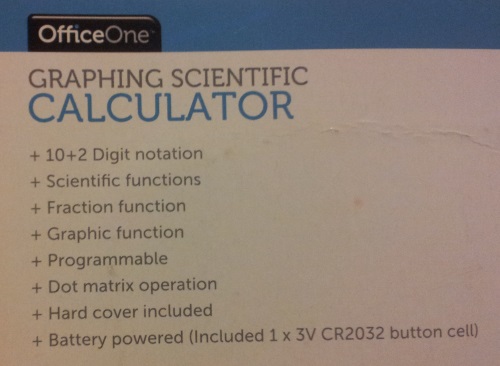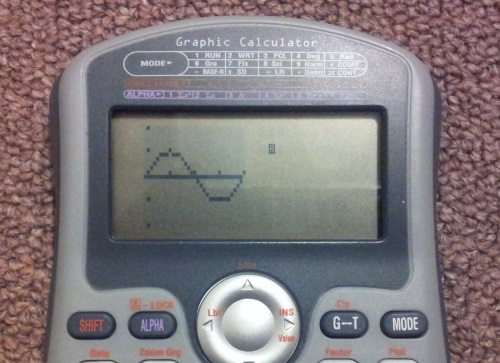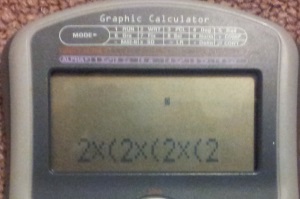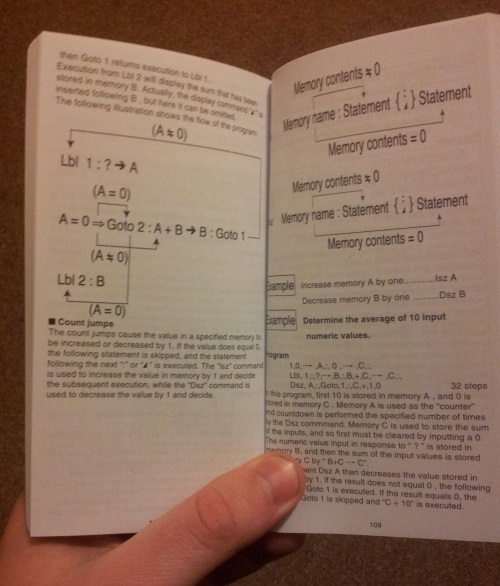So I was in Kmart the other day, and saw this calculator on sale for $15:

Wow! I thought. Can you really get a quality graphics calculator for $15?
Okay, not really. But I still bought it anyway, for a reason even worse than gullibility: pure curiosity. Surely this is terrible. How terrible can it be?
But let’s give this calculator the benefit of the doubt. Maybe it will blow me away. Maybe Kmart have managed to make a decent calculator affordable where TI and Casio haven’t. (Well, I assume the big names know how to make an affordable graphics calculator. They’ve just chosen not to…)
The back of the packaging promised these features:

Dot matrix! Like the old printers!
Inside I found the calculator, a cover and a surprisingly thick instruction manual:

Gee, the design on that cover sure looks familiar…
After eventually figuring out how to remove the cover (it just pulls off instead of sliding), I found the calculator very comfortable to hold. It’s lighter than my phone, and has a nice rubber edging to it. So there’s one plus!
I pushed the ON button, and… it turned on! All going well so far.
But going by the features listed on the package, while it’s all technically true, I would never want to rely on them in the classroom. Despite the screen being big enough for more, it can only show one and a half lines of text. The “dot matrix” only covers about half of the screen, which is the area used to draw a graph. I did get it to draw this nice(ish) looking graph:

That is a graph of y = 0.5 sin(π•x/12). I only got it to look like that by defining the screen dimensions manually. That is, because I already know exactly what the graph looks like. It would have been a lot quicker and easier on paper.
And there is a trace function. It shows a flashing dot on the curve that you can move, and nothing else. Certainly no values. But, you know, it traces!
How does it go with calculations? It works well enough as a basic scientific calculator. But apparently this is a valid input:

Of course it’s 16. What do you mean the parens should match?
I was curious how many levels of this you could have before you got a stack error. Answer: 12.
And it’s programmable. Apparently. Though I did some programming with assembly code at uni, that seemed a lot less archaic than what the instruction manual was suggesting for this calculator.

Argh! The goto! The goto!
Honestly, for the price it really doesn’t do that badly. But for a similar price, you can get a decently made scientific calculator with actually useful features, like displaying fractions properly and remembering past inputs. There’s really only one use case I can think of for buying a calculator like this: if you’re a maths blogger, and you feel like writing something silly instead of something interesting and useful.
Is that joke worth $15? No, not really.
I did buy other stuff that day that I plan to make use of for real maths lessons. I’ll blog about them one day, when I’m not feeling so silly.